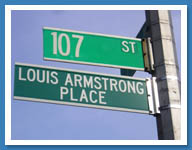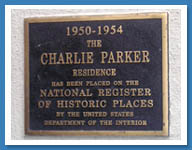SIX-HOUR ADVENTURES
Manhattan
Here's an opportunity to see virtually all the most famous and fascinating areas of Manhattan's lower half during a single six-hour jaunt. We begin in the always-evolving Times Square area, then take in three other notable squares (Herald, Madison and Union) along Broadway. They're all historic – and all quite different in character. Next, we’ll wander along several of the West Village's most interesting side streets, then walk through Soho's trendiest shopping precincts. After a look at Little Italy and Tribeca, we'll explore the Financial District, Chinatown, the Lower East Side and the East Village. Finally, after checking out two of the city's most awe-inspiring spaces – Grand Central Terminal and the New York Public Library's main branch – we'll finish with a visit to St. Patrick's Cathedral and Rockefeller Center. How is it possible to experience so much of Manhattan in such a short time? It's because we're traveling from one neighborhood to another by subway or bus, whenever it's possible to save both steps and minutes.
Queens
Comedian Rodney Dangerfield would have expressed it this way: "Queens don't get no respect!" In a sense, that's true. While the travel section at Barnes & Noble offers perhaps a dozen volumes covering Brooklyn, it’s difficult to find even a single book detailing the pleasures of New York's largest and most varied borough. We simply can't imagine why. Queens is not only huge. It's also America's single most diverse county, in terms of ethnic and religious groups. What's more, Queens is chock-full of fascinating neighborhoods, great shopping opportunities and absolutely wonderful food. You'll see Astoria (including an outdoor beer garden opened by Czechs a century ago, several blocks lined with Egyptian hookah cafes and a sensational array of eateries offering Greek and Italian home cooking)…Flushing (one of the earliest Dutch settlements but now a bustling community filled with Chinese, Korean and South Asian families)…Forest Hills (among the most admired planned communities in the United States – and still every bit as green and gracious as it was in 1913)…Jackson Heights (designed as New York's very first garden community – and today a microcosm of the world, with cuisines from three dozen countries available for sampling within a relatively concentrated area)…and Roosevelt Island (splendidly isolated in the middle of the East River and once home only to TB hospitals and lunatic asylums – but today the location of walking paths, parks and gleaming apartment towers; linked to Manhattan by a thrilling aerial tramway).
For a schedule of these outings in Manhattan and Queens, click here.

Two-Hour Walks
Times Square
This SwingStreets tour traverses the heart of the Apple’s most storied entertainment district, characterized today by neon, nightlife, faux naughtiness and some carefully orchestrated neo-nostalgia. So how did a sparsely settled nineteenth century neighborhood best known for its livery stables become the glitzy epicenter of show business and a showcase for dazzling new corporate towers? That’s a fascinating tale best understood during the course of a stroll along the newly Disneyfied 42nd Street, past more than two dozen legitimate theaters (each with a rich history of its own), up the most impossibly congested stretch of Broadway and down several blessedly quiet crosstown blocks. Along the way, we’ll also see plenty of music scene landmarks and the sites of several Mafia rub-outs.
Greenwich Village
Everyone – even those who’ve never been there – seems to know at least something about the Village because they’ve read novels and seen movies set there. But visitors and even longtime residents can be surprised when they happen upon one of this area’s hidden corners and byways. It's a hard-to-navigate neighborhood where narrow streets suddenly bend and (in violation of the Manhattan’s orderly grid) West 4th actually crosses West 10th. Along our route, we’ll pass several of the Macdougal Street coffeehouses favored by Beat Generation luminaries...three places Bob Dylan once called home...Jimi Hendrix’ recording studio...a women’s jail...locations popular as film and TV backdrops...the residences of poets, painters, politicians, scoundrels and eccentrics...and many of our city’s finest assemblages of Federal, Greek Revival and Italianate townhouses. Loads of jazz landmarks, too!
The East Village
Half a century ago, the East Village was home to Ukrainian social clubs, German shooting societies, Russian steam baths and radicals of several stripes. Then beginning in the 60s, successive waves of hippies and yippies found cheap housing in the area called Alphabet City. Soon, this became downtown’s trendiest neighborhood, popular with avant-garde painters, poets and theater people. But gentrification in recent years has again brought remarkable transformation. During this tour, we’ll see what remains of the old Yiddish theater district, the 1833 Greek mansions along Lafayette Street where Dickens, Irving and Thackeray were guests…locations frequented by Kerouac, Ginsberg and Burroughs…a residence that once sheltered homeless newsboys… lots of quirky signage…some bizarrely decorated community gardens…the corner where George and Ira Gershwin grew up…New York’s oldest church…the sites of both the Opera House riot and the Triangle Shirtwaist Factory disaster…a municipal park long favored by malcontents…and the graveyard where they buried Preserved Fish.
Fort Greene / Clinton Hill
If you’ve never wandered through these two Brooklyn precincts, you’re in for a real surprise – and a treat. Wealth, combined with refined nineteenth-century taste, created block after block of distinguished homes: Italianate brownstones, Romanesque mansions and Victorian row houses, along with some spectacular houses of worship. We’ll even see a few well-preserved pre-Civil War survivors crafted from wood. Today, the solidly middle-class territory stretching from BAM to the Pratt campus is home to a wide variety of artists and artisans who value the strong sense of community so apparent here. Lots of prominent jazz musicians reside within these precincts, too. What’s more, new cafes and ethnic restaurants have enlivened commercial stretches of streets like Lafayette, Fulton and Dekalb.
Bedford-Stuyvesant
Two of Brooklyn's old colonial villages – Bedford and Stuyvesant Heights – long ago merged to become what’s now the most populous of New York’s predominantly African-American neighborhoods. These days, the area is once again on the upswing, in terms of community spirit, and its proud residents are active in more than 200 block associations. During this walk, we'll explore the gracious tree-lined blocks along Bedford-Stuyvesant’s southern rim, many filled with well-preserved brownstones built between 1890 and 1910 that are equal in distinction to the best of those in Park Slope and Boerum Hill. Several of the larger local apartment towers – the Renaissance, the Imperial and the Alhambra – are still every bit as magnificent as their names suggest. After cruising Fulton Street’s multicultural shopping strip, we’ll cross Atlantic Ave. to look at a neighborhood known as Crown Heights North, home to one of Brooklyn’s most medieval-looking National Guard armories and what was once the borough’s most resplendent gentlemen’s club.
To book any of these tours for your group, query info@swingstreets.com or phone 718/680-6677


